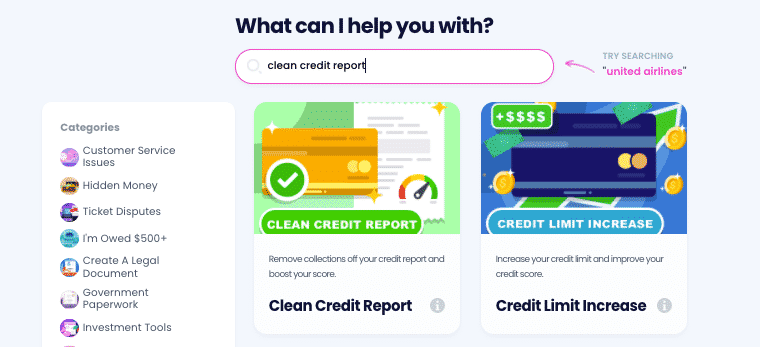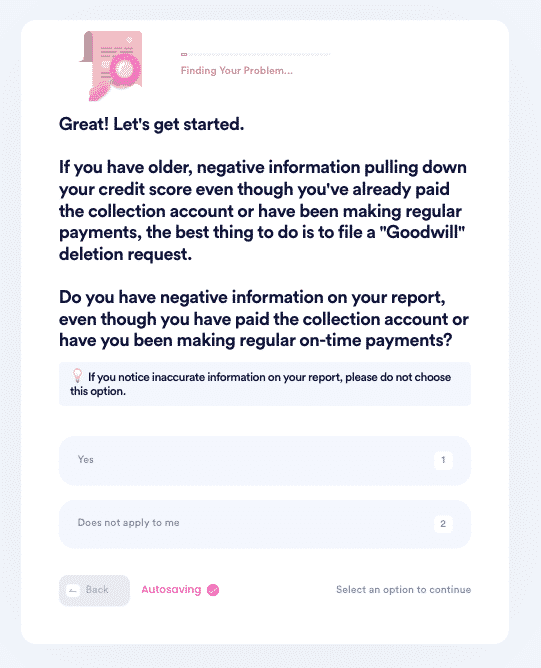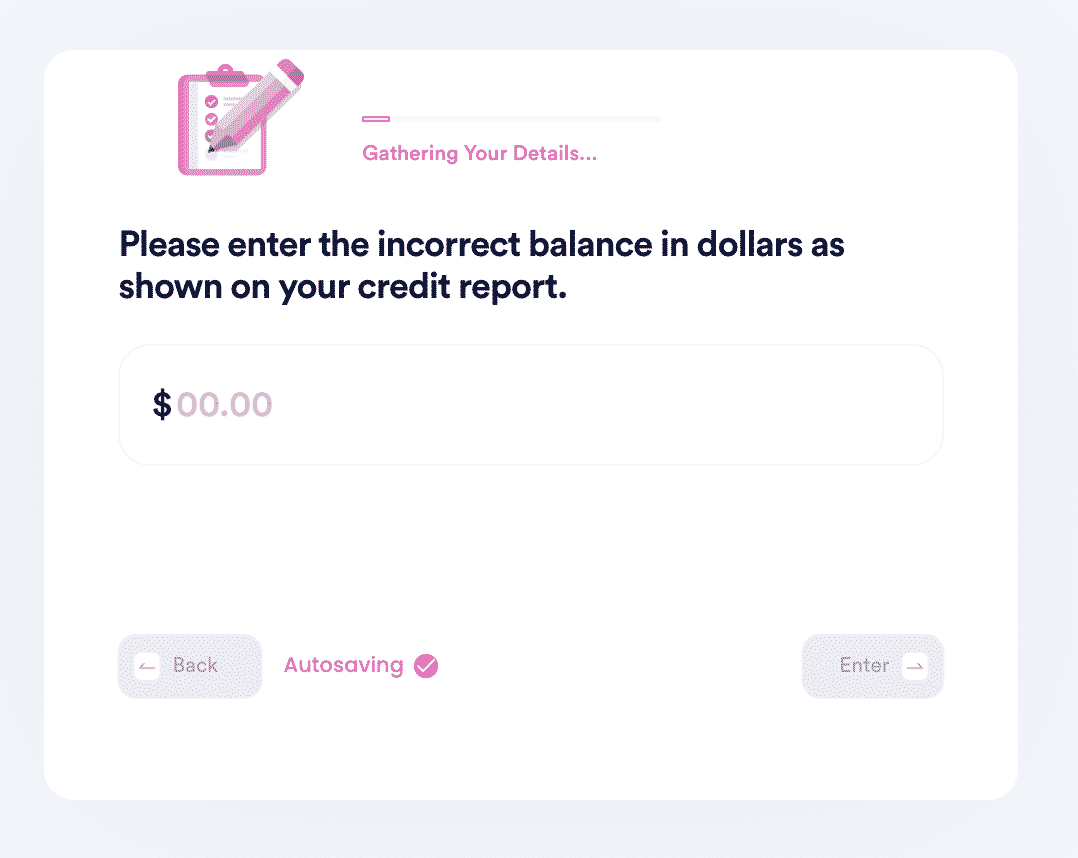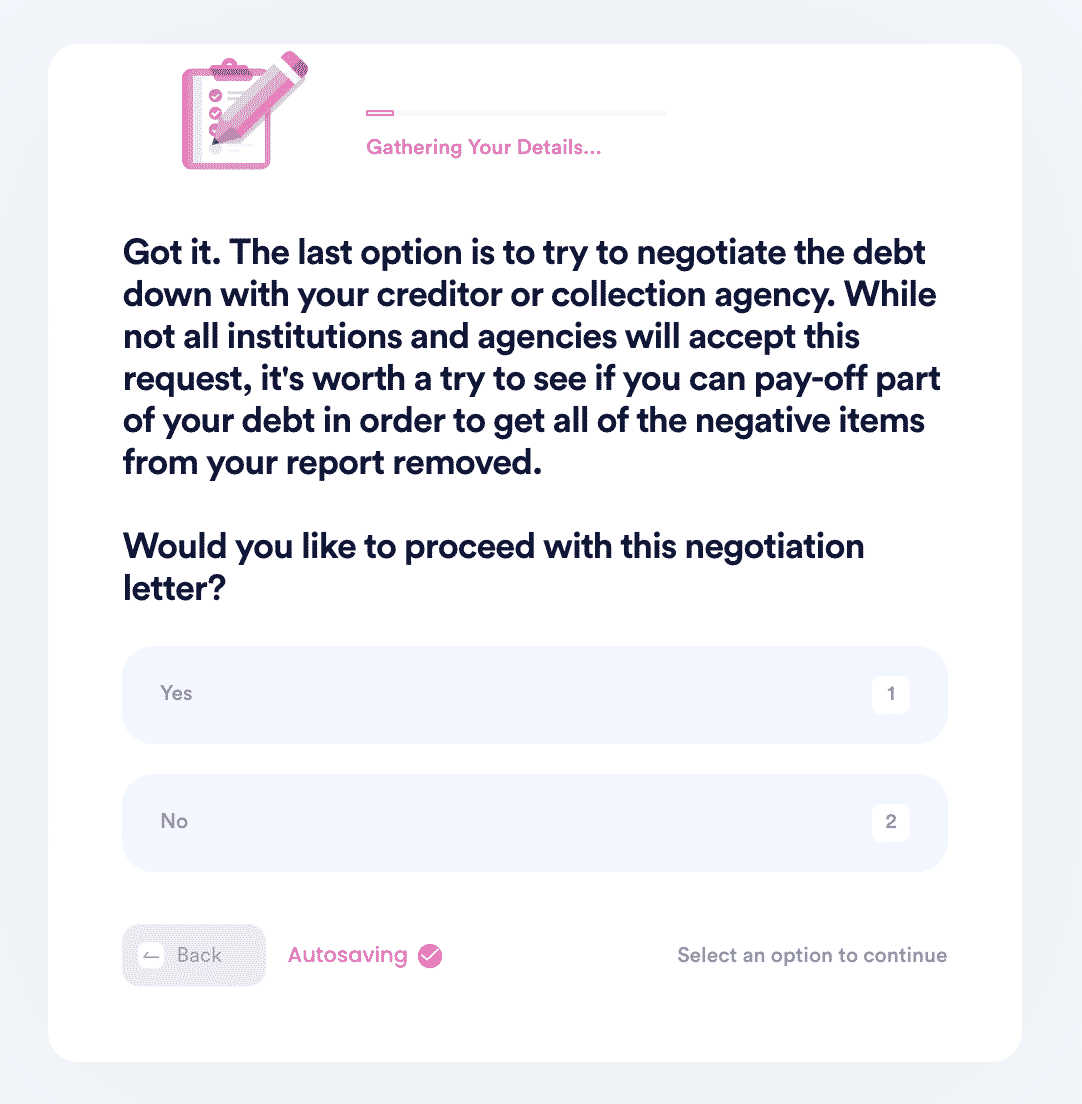How to Remove Negative Items From Credit Report In 3 Steps
Your credit history has a huge influence on the financial aspects of your life. When you have poor credit, you'll find it difficult to get approved for lines of credit or new loans. Finding can help achieve a better credit score. However, looking for solutions to erase unfavorable credit report entries on your own isn't as simple as you would expect.
With DoNotPay, bad credit doesn't have to remain on your credit report forever. Whatever error or misunderstanding led to the bad credit, DoNotPay will dispute it on your behalf to help you erase it from your records. DoNotpay also offers an easy solution to individuals who want to remove collections, late payments, and inquiries from a credit report. Even if you want to learn the best ways to fix your credit score, DoNotPay offers the best solution. Keep reading for more information.
What Is Bad Credit?
Bad credit means a negative factor in your credit history, indicating that you are a risky borrower. Bad credit can be a result of things such as making late payments. Bad credit is often reflected in a low credit score. If you are a business owner, bad credit may be based on your current financial situation and payment history.
Ways to Erase Negative Items from Your Credit Report by Yourself
Below are some ways to . Note that trying to remove credit issues from your report by yourself won’t be easy.
| File a Dispute | You have a right to dispute any possible errors on your credit report with the credit bureau. The Fair Credit Reporting Act defines the details that should be listed on your credit report. The FCRA law allows you to get accurate credit reports so you can dispute any mistakes via mail or online. |
| Make a Goodwill Request for Deletion | You don't have much negotiation power in cases where you've paid the account. Requesting a Goodwill Deletion can be a good option. Write a letter to the creditor describing why you were late and state that you have since become a good paying customer. Ask the creditor to rate your account more favorably. |
| Request Delete for Pay | Another option is to request to Pay for Delete to the debt collection agency or creditor. In this process, you ask a creditor to erase any negative details in your credit file, like missed or late payments.
Write a Pay for Delete letter including the following:
|
| Wait It Out | Although this isn't the most ideal solution while trying to remove bad credit, you do have the option to wait for the issues on your report to expire. The law allows the negative details on credit reports to stay for seven years. The only exception is a bankruptcy filing which can last for up to 10 years. The wait may be difficult, but this is a choice you can opt for, if you’re want to do it. |
DoNotPay Can Help You Erase Bad Credit
You always want to remove bad credit history or negative items from your credit report, especially when planning to apply for a car loan or mortgage. If your credit report has negative information such as overdue bills, closed credit accounts, repossessions, and more, it will be an obstacle to a better lifestyle. Even if you qualify for a loan, you will likely pay a higher interest rate.
Erasing a bad credit on your own isn't an automatic process. For instance, waiting it out may inconvenience you from seeking a loan. Also, submitting a dispute to the credit bureau is a tedious process. You have to write a letter and include copies of any proof, then wait for the investigations into your dispute.
Whatever you are dealing with from charge-offs, late payments, or foreclosures, you can count on DoNotPay to help you out quickly and easily. DoNotPay’s team can even draft a credit dispute letter or debt validation letter to ensure it can help you improve your credit score.
How to Remove Credit Using DoNotPay:
If you wish to remove bad credit but don't know where to start, DoNotPay can help you out in three simple steps:
- Go to DoNotPay and search Remove Credit.

- Next, prepare a recent copy of your credit report that you can use as reference.

- DoNotPay can execute any one of the four options below:
- If you've already paid off the debt, DoNotPay will help you file a Goodwill Removal Request to erase the bad credit.

- In case there are any errors in your credit report, DoNotPay will assist you to file a credit dispute with the credit bureau or creditor.

- Once you confirm there are no errors, DoNotPay will assess if you're still eligible to file a debt validation request. If it's possible to validate your debt, the credit bureaus should remove it from your report and can't collect it.

- If none of these options works, DoNotPay will assist you to file a pay-to-delete negotiation letter.

DoNotPay Can Also Help with Your Other Credit Report Needs
DoNotPay also has the means and services to assist you in other credit report-related concerns you may have, including:
- How to dispute your credit report
- How to remove collections from your credit report
- How to remove inquiries from your credit report
- How to remove late payments from your credit report
- How to write a debt validation letter
- How to write a credit dispute letter
- How to fix your credit score
- How to improve your credit score
DoNotPay Works in Various Other Ways
Apart from helping you erase credit history, you can also rely on DoNotPay to solve various other problems. Here are other ways you can use DoNotPay:
- Get a virtual credit card
- Schedule DMV appointments
- Cancel any subscriptions
- Help with bills
- Appeal parking tickets
Check the DoNotPay site on how it can help you solve various issues.
 By
By